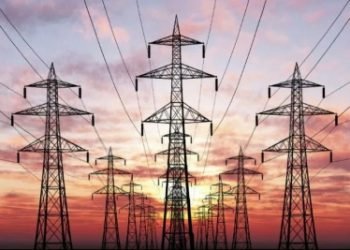India’s power grid stretches across mountains, deserts, and bustling cities. It faces tough issues like frequent storms and long distances between plants and homes. opgc cable india steps in as a smart fix. This optical ground wire combines protection for power lines with fast data transfer. It helps build a stronger energy system. In this piece, we’ll look at the history of OPGW cables in India, their key perks, real-world uses, hurdles, and what lies ahead.
History and Evolution of OPGW Cables in India
Origins and Introduction to the Indian Market
Engineers invented OPGW cables in the 1970s to blend fiber optics with power line safety. India picked up the idea in the 1980s as its power rules loosened up. Groups like POWERGRID started using them in the 1990s to link electrical shielding with communication needs.
Early setups came in small tests. By the late 1990s, big projects rolled out OPGW across key lines. The Electricity Act of 2003 pushed this growth by calling for better grids. Designs shifted from simple wires to tough composites that handle India’s hot summers and cold winters.
These changes fit local needs. For example, cables now resist rust better in coastal spots. This evolution turned OPGW into a must-have for reliable power.
Key Milestones in Indian Power Sector Adoption
Public firms led the charge in spreading OPGW. In the 2000s, national grid projects added miles of these cables. POWERGRID tied them into plans for linking north and south regions.
By the 2010s, smart grid pushes sped things up. OPGW let teams watch lines in real time, cutting blackouts. Ties with global makers helped build factories here, boosting local jobs.
One big win came from projects under the National Transmission Plan. They synced grids without big delays. This shift made power flow smoother nationwide.
Current Manufacturing Landscape
India now makes most OPGW cables at home. Firms like Apar Industries and Sterlite Power lead the pack. They focus on self-made parts after the Make in India push.
Standards match global rules, like IEC ones tweaked for local weather. This cuts imports and lowers costs. Plants use modern tools to test strength and speed.
Local production means faster fixes for utilities. It also builds skills in fiber tech. As demand grows, more companies join in.
Benefits of OPGW Cables for India’s Power Infrastructure
Enhanced Reliability and Fault Detection
OPGW cables shine in spotting problems early. Their built-in fibers track heat and strain along lines. This stops small issues from causing big blackouts in India’s wide network.
Think of it like a doctor’s checkup for wires. In rainy areas, they catch floods before damage spreads. Utilities see 20-30% less downtime in tough spots.
You can boost uptime by picking OPGW for risky paths. It fits monsoons and remote hills perfectly.
Cost-Effectiveness and Dual Functionality
Why build two systems when one does both? OPGW acts as a shield against lightning and a path for data. This saves money on separate telecom lines.
Over time, it pays off big. No need for extra poles or digs. Compare it to old ACSR wires—OPGW wins on total costs, especially with data demands.
For fresh builds, run a quick ROI check. Factor in how it handles voice and video signals too.
Environmental and Durability Advantages
These cables laugh off harsh weather. They fight rust and ignore electrical buzz. Perfect for India’s mix of sand, snow, and seas.
Light builds make setup easier on rough ground. In shaky zones, pick ones with steel cores for extra hold. They last decades without much fuss.
Go for aluminum-clad options in mountains. This keeps your grid tough year-round.
Applications of OPGW Cables Across Indian Industries
Power Transmission and Distribution Networks
High-voltage lines rely on OPGW for safety and smarts. NTPC and state teams use it to sync grids. It links far plants to cities without glitches.
In SCADA setups, it sends control signals fast. Take the Western Grid links—they run smoother thanks to OPGW. This means steady power for millions.
State utilities add it to local nets too. It cuts response times during peaks.
Telecommunications and Smart Grid Integration
OPGW opens doors for broadband on power lines. It aids Digital India by reaching rural spots. Smart cities use it for IoT sensors that track traffic and lights.
Pair it with power firms for cheap 5G links. No new wires needed—just tap the existing ones. This speeds up net access everywhere.
Railway and Renewable Energy Projects
Indian Railways wires OPGW into signal systems. It keeps trains on track with quick alerts. Safe rides follow from real-time checks.
For solar and wind sites, it’s a game-saver. Green Energy Corridor projects monitor panels and turbines. Spot issues early to slash upkeep bills.
In farms, link OPGW to watch output. This lifts green power goals without waste.
Challenges and Solutions in OPGW Implementation in India
Installation and Maintenance Hurdles
Remote spots make setup hard. Skilled workers are few, and gear hauls are tough. High hills add extra risks.
Drones help scout paths first. They trim planning time by 40%. Train locals on basic checks to ease upkeep.
This approach keeps projects on budget.
Regulatory and Standardization Issues
Rules from BIS and CEA guide installs. But old import habits linger. Quality varies without tight checks.
Centers like CPRI drive home-grown tests. Push for one set of standards nationwide. This raises bar for all makers.
Technological Upgrades and Future-Proofing
5G needs more data speed. Old OPGW might lag. Hybrid types with extra fibers fix that.
Upgrade for big voltage lines ahead. Add more cores now to grow later. It sets you up for what’s next.
Market Trends and Future Outlook for OPGW in India
Growth Drivers and Market Expansion
Renewable goals fuel OPGW demand. Schemes like UDAY fix old nets with smart tech. More cash flows to grids too.
Sales climb with solar booms. Hybrids like ADSS-OPGW mix perks. Rural links grow fast.
Innovations and Global Influences
Fiber tech gets finer each year. Ties with AFL or Prysmian bring fresh ideas. Indian firms tweak them for local use.
Focus on green materials for net-zero by 2070. This draws eco-buyers. Stay ahead with bend-proof fibers.
Opportunities for Stakeholders
Investors eye rising sales. Utilities can swap old lines for OPGW gains. Engineers find jobs in installs.
Audit current setups for quick adds. Boost data without full overhauls. It’s a win for all.
Conclusion
OPGW cables change how India handles power and talk lines. They bring trust, save cash, and fit tough lands. From grids to rails, they prove their worth.
Pick OPGW for new work to build strong setups. Back local makers for less reliance on outside help. Use it to push smart grids forward.
As India chases energy freedom, opgc cable india leads the way. It powers homes, speeds data, and lights the future. Ready to plug in?
Follow Us More Links:-
Follow Us On Facebook:- https://www.facebook.com/systgroup/
Follow Us On Linkedin:- https://linkedin.com/company/systematic-group
Email Us:- contact@systematicltd.com
Add:- 418, Nirmal Corporate Center, Beside Nirmal Lifestyle Mall, L.B.S. Marg, Mulund (West), Mumbai-400080
Call Us:- +91 8080 933 666





